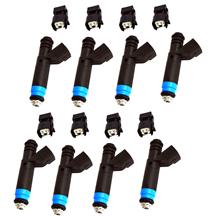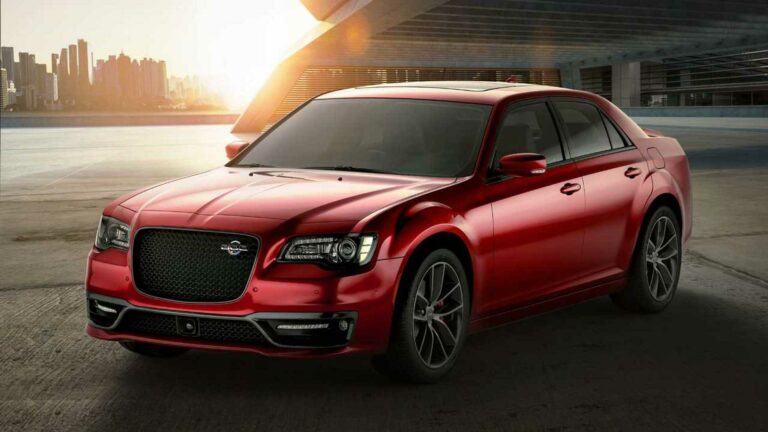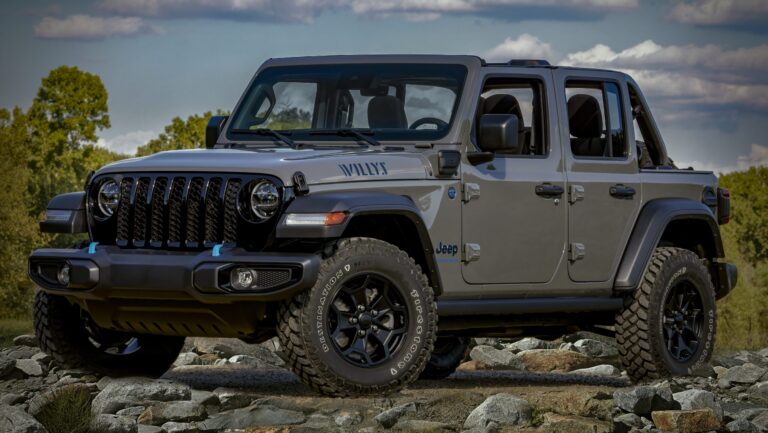2011 Jeep Grand Cherokee Overland: A Comprehensive Guide to American Luxury and Capability
2011 Jeep Grand Cherokee Overland: A Comprehensive Guide to American Luxury and Capability jeeps.truckstrend.com
The 2011 Jeep Grand Cherokee Overland stands as a pivotal vehicle in the storied history of the Grand Cherokee lineage. Marking the debut of the WK2 generation, this model represented a significant leap forward in terms of refinement, technology, and on-road manners, all while retaining the legendary off-road prowess Jeep is renowned for. The Overland trim, positioned at the pinnacle of the lineup for its year, offered a compelling blend of premium luxury features, potent performance, and unparalleled all-terrain capability, making it a highly desirable SUV then and a surprisingly compelling value in the used market today. For discerning buyers seeking a vehicle that can effortlessly transition from urban commuting to rugged trails, the 2011 Grand Cherokee Overland remains a formidable contender, embodying the spirit of adventure draped in sophisticated comfort.
I. The WK2 Generation: A Transformative Redesign
2011 Jeep Grand Cherokee Overland: A Comprehensive Guide to American Luxury and Capability
The 2011 model year introduced the fourth generation of the Grand Cherokee, codenamed WK2. This was no mere facelift; it was a comprehensive overhaul built on a completely new platform shared with the Mercedes-Benz ML-Class (a legacy of the DaimlerChrysler era). This new architecture brought about a host of improvements, fundamentally transforming the Grand Cherokee’s driving dynamics and overall quality.
Gone were the live front axle and more truck-like characteristics of previous generations. The WK2 adopted an independent front and rear suspension setup, significantly enhancing on-road ride comfort, handling precision, and steering feel. The interior was also dramatically upgraded, shedding the utilitarian feel of older models for a more upscale, ergonomically designed cabin with higher-quality materials. This generation aimed to bridge the gap between traditional rugged SUVs and luxury crossovers, successfully appealing to a broader audience while still satisfying the core Jeep enthusiast. The Overland trim, in particular, was designed to showcase the best of this new philosophy.
II. Distinguishing Features of the Overland Trim: Luxury Meets Ruggedness
The 2011 Grand Cherokee Overland set itself apart from its siblings through a curated selection of premium features, both inside and out. It was designed to offer a truly upscale experience without compromising its inherent capability.
Exterior Enhancements:
- Distinctive Styling: The Overland received unique chrome exterior accents, including a seven-slot grille with chrome mesh inserts, chrome roof rails, and bright door handles.
- Premium Lighting: Bi-xenon HID headlamps were standard, providing superior illumination, complemented by LED daytime running lights.
- Unique Wheels: 20-inch polished aluminum wheels were standard, giving the vehicle a commanding stance.
- Power Liftgate: A convenient power liftgate made loading and unloading cargo effortless.

Interior Refinements:
- Luxurious Seating: Supple Nappa leather-trimmed seats were standard, featuring heating and ventilation for both front passengers, and heating for the second-row outboard seats. The front seats also included power adjustments with memory function.
- Premium Materials: Real open-pore wood trim adorned the dashboard, door panels, and steering wheel, adding a touch of classic elegance. The leather-wrapped steering wheel was also heated.
- Dual-Pane Panoramic Sunroof: The CommandView® dual-pane panoramic sunroof provided an expansive view of the sky, enhancing the sense of spaciousness within the cabin.
- Advanced Infotainment: The UConnect 730N infotainment system with an 8.4-inch touchscreen offered navigation, voice command, satellite radio, and a premium audio system (initially Boston Acoustics, later Harman Kardon for some models). A rearview camera was also integrated.
- Comfort & Convenience: Keyless Enter-N-Go, remote start, power-adjustable pedals, and automatic dual-zone climate control further elevated the comfort and convenience levels.


III. Powertrain Options and Performance
The 2011 Grand Cherokee Overland offered two robust engine choices, each paired with a responsive 5-speed automatic transmission (W5A580), catering to different performance and efficiency preferences.
- 3.6L Pentastar V6 Engine: This all-new engine was a revelation for Jeep. It produced a healthy 290 horsepower and 260 lb-ft of torque. For its size, the Pentastar V6 offered a good balance of power and efficiency, with EPA estimated fuel economy of around 16 MPG city / 23 MPG highway for 4×2 models and 16 MPG city / 21 MPG highway for 4×4 models. It was more than adequate for daily driving, highway cruising, and light towing.
- 5.7L HEMI V8 Engine: For those craving more power and towing capability, the legendary 5.7L HEMI V8 was the answer. It delivered a robust 360 horsepower and 390 lb-ft of torque. Equipped with Chrysler’s Multi-Displacement System (MDS), which allowed it to shut down four cylinders under light load, it aimed to improve fuel economy (though still thirstier than the V6, at around 13 MPG city / 20 MPG highway for 4×4). The HEMI V8 significantly boosted towing capacity to up to 7,400 lbs, making it ideal for hauling boats or trailers.
On-road, the new independent suspension system truly shone, providing a smooth, composed ride that belied the Grand Cherokee’s off-road potential. Steering was precise, and body roll was well-controlled for an SUV of its size, making it a confident highway cruiser and surprisingly nimble in urban environments.
IV. Legendary Jeep Capability: Off-Road Prowess
Despite its newfound luxury and on-road refinement, the 2011 Grand Cherokee Overland did not forget its roots. It remained a true Jeep, engineered for impressive off-road capability, especially when equipped with the advanced 4×4 systems.
- Quadra-Trac II® 4×4 System: Standard on most 4×4 models, this system used a two-speed transfer case with a low range, and a sophisticated Brake Lock Differential (BLD) system to distribute torque to the wheels with the most traction.
- Quadra-Drive® II 4×4 System: The ultimate choice for serious off-roading, Quadra-Drive II added Electronic Limited-Slip Differentials (ELSDs) at both the front and rear axles. These ELSDs could instantly send 100% of available torque to a single wheel if needed, providing superior traction in extreme conditions like mud, sand, or over rocks.
- Quadra-Lift® Air Suspension: This revolutionary air suspension system was a game-changer. It allowed the driver to select five different ride height settings:
- Normal Ride Height (NRH): Standard everyday driving.
- Park Mode: Lowers the vehicle for easier entry/exit.
- Aero Mode: Lowers the vehicle at highway speeds for improved aerodynamics and fuel efficiency.
- Off-Road I: Lifts the vehicle by 1.5 inches for improved ground clearance (total 9.0 inches).
- Off-Road II: Lifts the vehicle by 2.5 inches for maximum ground clearance (total 10.7 inches), essential for challenging trails.
- Quadra-Lift also offered load leveling capabilities, maintaining a consistent ride height regardless of cargo or towing weight.
- Selec-Terrain® Traction Management System: This intuitive system allowed the driver to optimize the vehicle’s performance for various terrains by adjusting throttle response, transmission shift points, transfer case operation, traction control, and the Quadra-Lift system. Modes included: Sand/Mud, Sport, Auto, Snow, and Rock.
These features combined to give the 2011 Grand Cherokee Overland truly impressive off-road credentials, capable of tackling trails that would leave most other luxury SUVs stranded.
V. Safety Features and Technology
Safety was a key focus for the WK2 generation, and the Overland trim benefited from a comprehensive suite of active and passive safety technologies.
- Standard Safety: Multiple airbags (front, side-curtain, seat-mounted side airbags), Anti-lock Brake System (ABS), Electronic Stability Control (ESC), Electronic Roll Mitigation (ERM), Hill Start Assist, and Trailer Sway Control were all standard.
- Advanced Safety (Optional/Standard on Overland):
- Blind Spot Monitoring (BSM) and Rear Cross-Path Detection: Alerted the driver to vehicles in blind spots or approaching from the side when backing up.
- Adaptive Cruise Control (ACC): Maintained a set distance from the vehicle ahead, even in stop-and-go traffic.
- Forward Collision Warning (FCW): Provided audible and visual warnings if a frontal collision was imminent.
- ParkSense® Rear Park Assist System: Utilized ultrasonic sensors to detect obstacles when backing up.
- Rearview Camera: A standard feature on the Overland, aiding in parking and low-speed maneuvering.
The 2011 Grand Cherokee received excellent safety ratings from both the NHTSA (5-star overall) and the IIHS (Top Safety Pick), reinforcing its commitment to passenger protection.
VI. Owning a 2011 Grand Cherokee Overland Today: Important Considerations
For buyers considering a used 2011 Jeep Grand Cherokee Overland, understanding its strengths and potential challenges is crucial for a satisfying ownership experience.
Pros:
- Luxury and Comfort: Still feels premium inside, with comfortable seats and a quiet cabin.
- Strong Performance: Both V6 and V8 options offer ample power.
- Exceptional Capability: Unmatched off-road prowess for its class, especially with Quadra-Drive II and Quadra-Lift.
- Value: Offers a lot of luxury and capability for its current used market price.
- Towing: Excellent towing capacity with the V8.
Cons and Potential Challenges:
- Fuel Economy: Especially with the V8, fuel costs can add up.
- Maintenance Costs: As a luxury-equipped vehicle, parts and labor for repairs can be higher than average.
- Common Issues:
- TIPM (Totally Integrated Power Module): A known weak point in many Chrysler products of this era. Can cause various electrical gremlins (e.g., fuel pump issues, lights not working).
- HVAC Blend Doors: Actuators can fail, leading to inconsistent temperature control.
- Quadra-Lift Air Suspension Leaks: Over time, air springs and lines can develop leaks, leading to the vehicle sagging, often requiring expensive replacement of components.
- Sunroof Drain Clogs: If not maintained, the panoramic sunroof drains can clog, leading to water leaks into the cabin.
- Water Pump/Thermostat Housing (V6): Early Pentastar engines can have issues with these components.
- Power Steering Pump/Reservoir: Some owners report issues with these components.
Buying Advice:
- Pre-Purchase Inspection (PPI): Absolutely essential. Have a trusted mechanic (preferably one familiar with Jeeps/Chrysler products) thoroughly inspect the vehicle, paying close attention to the air suspension, electrical system, and any fluid leaks.
- Service Records: Request complete service history to understand past maintenance and repairs.
- Test Drive: Pay attention to how the air suspension behaves (does it raise/lower smoothly? Does it hold air overnight?), listen for any unusual noises, and check all electronic features.
- Check for Recalls: Ensure all applicable recalls have been addressed.
- Rust: Inspect the undercarriage and body for rust, especially in regions that use road salt.
Maintenance Tips:
- Regular Fluid Changes: Adhere to or exceed recommended intervals for oil, transmission fluid, differential fluid, and transfer case fluid.
- Air Suspension Care: Keep the system clean, listen for compressor noises, and address any signs of sagging immediately. Consider the long-term cost of replacing air components vs. converting to traditional springs (though this sacrifices features).
- Sunroof Drain Cleaning: Periodically clean the sunroof drains to prevent clogs and water leaks.
- Address Warning Lights Promptly: Don’t ignore check engine lights or other warning indicators.
Pricing Table: 2011 Jeep Grand Cherokee Overland (Estimated Used Market Value)
The value of a used 2011 Jeep Grand Cherokee Overland can vary significantly based on condition, mileage, engine type, options, and regional market demand. The table below provides a general estimate.
| Condition | Mileage Range | Engine | Drivetrain | Estimated Price Range (USD) | Key Considerations |
|---|---|---|---|---|---|
| Fair | 150,000+ miles | V6/V8 | 4×2/4×4 | $7,000 – $10,000 | May have significant cosmetic wear, mechanical issues, or deferred maintenance. Air suspension issues common. |
| Good | 100,000 – 150,000 miles | V6/V8 | 4×2/4×4 | $10,000 – $14,000 | Moderate wear, some minor issues possible, service records may be incomplete. |
| Very Good | 75,000 – 120,000 miles | V6/V8 | 4×2/4×4 | $14,000 – $18,000 | Well-maintained, minor cosmetic flaws, good mechanical condition. |
| Excellent | Under 75,000 miles | V6/V8 | 4×2/4×4 | $18,000 – $22,000+ | Impeccable condition, low mileage, full service history, rare. |
Note: Prices are estimates and subject to change based on market dynamics, location, specific options (e.g., Quadra-Drive II, advanced safety packages), and the vehicle’s history report (e.g., accident history).
Conclusion
The 2011 Jeep Grand Cherokee Overland redefined what a Jeep could be, seamlessly blending upscale luxury and sophisticated on-road manners with the brand’s unyielding commitment to off-road capability. As the flagship of the groundbreaking WK2 generation, it offered a comprehensive package of premium features, powerful engine options, and advanced 4×4 systems like Quadra-Lift and Selec-Terrain. While potential owners should be mindful of common maintenance points and ensure a thorough pre-purchase inspection, the 2011 Overland remains an exceptional value in the used SUV market. It delivers a unique combination of comfort, performance, and true go-anywhere spirit that few competitors can match, making it a compelling choice for those who demand both luxury and adventure from their vehicle.
Frequently Asked Questions (FAQ)
Q1: Is the 2011 Jeep Grand Cherokee Overland reliable?
A1: While the 2011 Grand Cherokee marked a significant improvement in quality, like any complex vehicle, it has specific known issues (e.g., TIPM, HVAC blend doors, air suspension leaks). With diligent maintenance and a thorough pre-purchase inspection, it can be a reliable vehicle. However, potential owners should budget for possible repairs, especially for the air suspension system if equipped.
Q2: What’s the fuel economy like for the 2011 Grand Cherokee Overland?
A2: Fuel economy varies by engine. The 3.6L Pentastar V6 typically gets around 16 MPG city / 23 MPG highway (4×2) or 16 MPG city / 21 MPG highway (4×4). The 5.7L HEMI V8 is thirstier, averaging about 13 MPG city / 20 MPG highway (4×4).
Q3: What are the most common problems to watch out for?
A3: Key areas of concern include the Totally Integrated Power Module (TIPM), HVAC blend door actuators, leaks in the Quadra-Lift air suspension system, and clogged sunroof drains leading to water leaks. For V6 models, water pump and thermostat housing issues have been reported.
Q4: Is the Quadra-Lift air suspension reliable?
A4: The Quadra-Lift system is a sophisticated feature that greatly enhances capability and comfort. However, its components (air springs, compressor, lines) can eventually wear out or develop leaks, leading to costly repairs. Longevity varies, but it’s a critical item to inspect thoroughly before purchase.
Q5: What is the towing capacity of the 2011 Grand Cherokee Overland?
A5: With the 3.6L Pentastar V6, the towing capacity is generally around 5,000 lbs. When equipped with the 5.7L HEMI V8 and the proper towing package, the towing capacity significantly increases to up to 7,400 lbs.
Q6: Should I choose the V6 or V8 engine for the 2011 Overland?
A6: The choice depends on your priorities. The 3.6L V6 is more fuel-efficient and offers sufficient power for most daily driving and light towing needs. The 5.7L HEMI V8 provides significantly more power and torque, making it ideal for heavy towing or those who desire stronger acceleration, but it comes at the cost of lower fuel economy.





